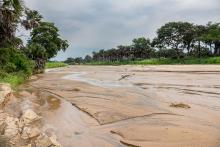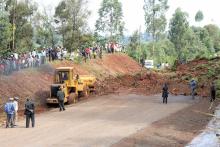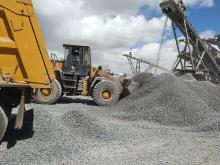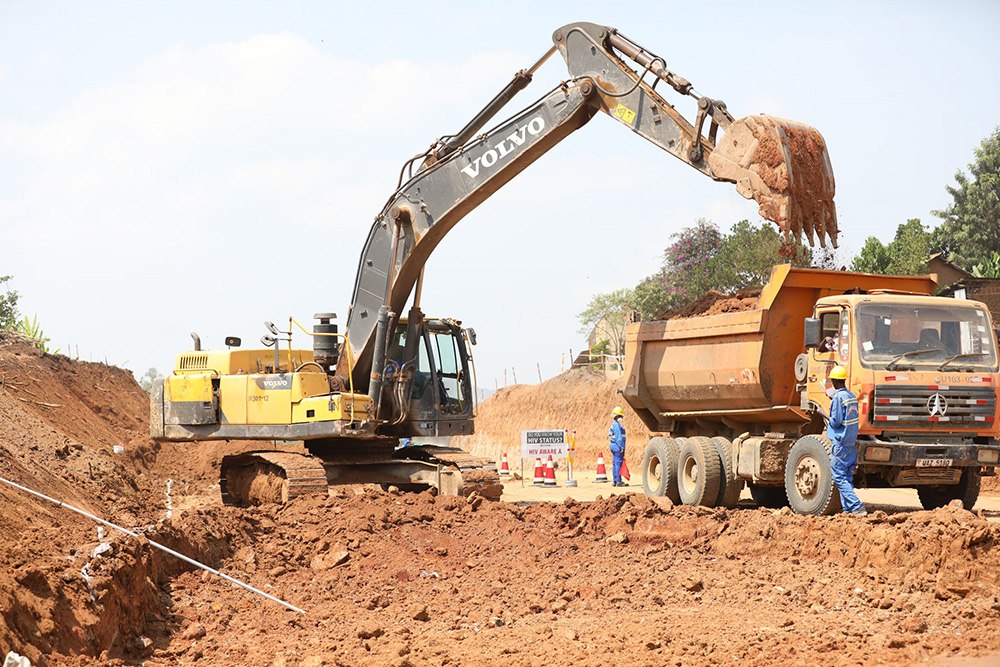
East Africa’s construction sector has been a longstanding success story. A report titled Opportunities in East Africa’s Construction Industries by Frost & Sullivan, a leading growth strategy consulting and research firm, projected the value of the region’s construction industry to expand by US$3bn between 2016 and 2021, driven largely by government initiatives, especially in Kenya, Uganda, Tanzania and Ethiopia.
The rapid growth did not stop in 2021. Ongoing huge demand for construction stone, sand and gravel is also great for the East African quarrying industry, as is the demand for production equipment and industrial explosives linked to mineral products processing.

With infrastructure projects, valued at an estimated US$61bn according to Deloitte Africa’s 2021 edition of the Africa Construction Trends report, the East Africa region, comprising countries such as Burundi, Comoros, Djibouti, Eritrea, Ethiopia, Kenya, Rwanda, Seychelles, Somalia, Tanzania and Uganda, is a key consumer of quarry products generated from rocks that are broken loose using industrial explosives.
Some of the key projects in East Africa expected to boost consumption of construction aggregates include the US$10bn Bagamoyo mega port, the US$ 7.6 billion Tanzania-Rwanda-Burundi railway, the US$7.5bn Dar es Salaam-Mwanza standard-gauge railway, the US$3.6bn Stiegler’s Gorge/Rufiji hydropower project, the US$1.7bn Karuma hydropower plant, and the US$1.3bn Bugesera International Airport among others.
A few major construction aggregate-consuming projects have recently been completed in the region, such as the US$9.8bn Kenya-Uganda-Rwanda-South Sudan rail project and the US$5bn Lamu project in Kenya.
But despite the increasing number of construction projects and corresponding changes in how they are researched, designed, and implemented, including deployment of information technology, little has been done in East Africa to amend regulations on the manufacture, transport, storage and use of construction raw materials, especially industrial explosives.
Quarry markets such as those in Kenya, Uganda, Rwanda and Tanzania, despite reporting huge strides in their economic and social developments, are still relying on old explosives regulations that are not in tandem with current construction industry trends in the region.
In Uganda, for example, the country’s Law Reform Commission says the landlocked country of 45 million people with a GDP of about US$40.53bn, has experienced phenomenal economic and social growth changes, yet “there has been no major reform of the law (explosives Act) to respond to these changes.”
“The different amendments that have taken place have been piecemeal and minor, targeting specific provisions,” the Commission says in a report.
The Commission has been involved in the review of Uganda’s Explosives Act, Cap. 298, which deals with the manufacture, storage, sale, transportation, importation, exportation, and use of explosives in the country.
“The review was intended to update and modernise the Act particularly to ensure a balanced approach in managing the sifting of explosives, managing security risks while minimising the impact on business and supporting innovation and competitiveness,” the Commission said.

At the end of the review, the Commission submitted to Uganda’s Attorney General the report and draft bill for fine-tuning and subsequent submission to the national parliament for approval.
But by the end of 2021, Uganda’s Ministry of Internal Affairs indicated the government was determined to “fast track the review of the Explosives Act”.
A review of Uganda’s Explosives Act is critical due to the country’s expanding mining and quarrying business.
For example, mining and quarrying registered a 15.8% growth in 2010/2011, according to the Commission. The sector has maintained a positive growth trajectory ever since, with the executive director of the Uganda Bureau of Statistics, Chris Mukiza, saying growth hit 17.1% in 2019/2020 before registering a decelerated growth of 14.5% in 2020/2021.
In spite of the mining and quarrying business’ positive performance over the years, the sector has become a point of reference on how not to do quarry business in Uganda.
According to the Commission, the structured development of quarries, particularly on a large scale or in a location that would necessitate an environmental impact assessment (EIA), can create detrimental impacts such as noise, vibration, dust, variation in the amount and quality of water, the lowering of the water table, and affect natural and cultural heritage, the landscape, traffic and waste materials.
The Commission’s report points out that quarry operations, although not specific to Uganda, “present social and health issues such as compensation and resettlement of persons and protection measures for workers.”
The Law Review Commission cites the example of Mukono district in Uganda, where local communities “have complained over damage to houses and crops resulting from quarry operations, others reported health concerns. Currently, there is no specific legislation regulating quarry operations or business.”
The situation leaves the quarry sector to self-regulate through the Uganda Quarry Operators Association. At least 100 registered entities are engaged in the country’s stone quarrying business.
Although there is no report available on these companies’ compliance levels with existing industry regulations, the government of Uganda has provided various requirements to govern quarries’ operations, including the deployment of industrial explosives.
For example, the process of deploying explosives in Uganda’s quarries starts with the identification of a rock deposit of commercial quality and sufficient quantity suitable for the Ugandan construction market, according to Uganda Artisanal And Small-Scale Mining & Quarrying (UGASM-Q).
The prospective aggregate producer would then proceed to acquire from an individual or community the rock deposit “by negotiating a fair market value”.
Ideally, a formal transfer of ownership of the rock deposit is done, and a certificate of title is processed. This process is followed up by conducting an EIA of the proposed stone quarrying business on the surrounding area and communities in conjunction with a government official, according to UGASM-Q.

Once Uganda’s National Environment Management Authority (NEMA), a semi-autonomous institution established in May 1995, approves the EIA and the applicant has paid the requisite fees, “the authority will issue an environmental permit detailing the scope of the quarrying operations and urging the holder to religiously abide by the terms and conditions contained therein.”
But the final greenlight for a prospective quarry owner to start blasting the rocks with explosives will be given by the General Security Officer at the Ministry of Internal affairs, “who will, in turn, visit the site with his committee on a fact-finding mission to establish the suitability of the location for conducting blasting operations.”
Once all approvals have been received, the new quarry operator enlists the services of an explosives expert to assess the number of explosives required to conduct a blast at the site.
“All explosives used in commercial quarrying are interned at a military facility in Iganga in Eastern Uganda, where an agent of the company that is a paid-up member of the stone quarry association presents the proof of payment and a release order of the said materials, which are then released into the custody of Uganda Police personnel to escort to the blast site,” the current Explosives Act says in part.
Back at the blast site, it is required that the district security authorities are notified of the intended blast and the blast radius secured and evacuated before the blast can be conducted.
Once the blast is done, the blasted material forms the raw material that is fed into the stone-crushing machines to produce the machine-crushed aggregate in three or four principal sizes, according to the Uganda Law Review Commission report.
But because of the lack of any legal framework to govern the outlined practices in the mining and quarrying business, the industry “is vulnerable to unfair practices and abuse without any recourse to clear legal remedies.”
“In view of cross-cutting issues raised by quarry operations and the complaints that have been raised by the local population, it is important that regulations are put in place to regulate quarry operations and activities,” the Commission adds.
The Commission proposes a review of the current industrial explosives regulations with emphasis on environmental and health issues as well as those affecting the local population, such as pollution, and damage to property and crops.
Although nearly all entities involved in quarry operations in Uganda use explosives, “there is no specific legislation governing the quarry business or operations in Uganda.”
The Explosives Act only makes provisions, restricting the use of blasting materials that are commonly used in quarry operations. “This has created a gap in regulation and left persons in the quarry business to self-regulation.”
Under the current Explosives Act, explosives have been categorised as either authorised or unauthorised.
The authorised explosives include ammunition of various kinds (cartridges), detonators, fireworks of various kinds, fuse igniters or tshisa sticks, gelatinous explosives, gunpowder, nitro-cotton, non-gelatinous explosives, percussion caps, safety fuse and sporting powder.
Furthermore, the Act says imported explosives that have already been approved for use in Great Britain, are deemed as having been authorised in Uganda.
In Rwanda, the country’s Mines, Petroleum and Gas Board (RMB) put in place requirements to streamline the use of explosives in mines and quarries.
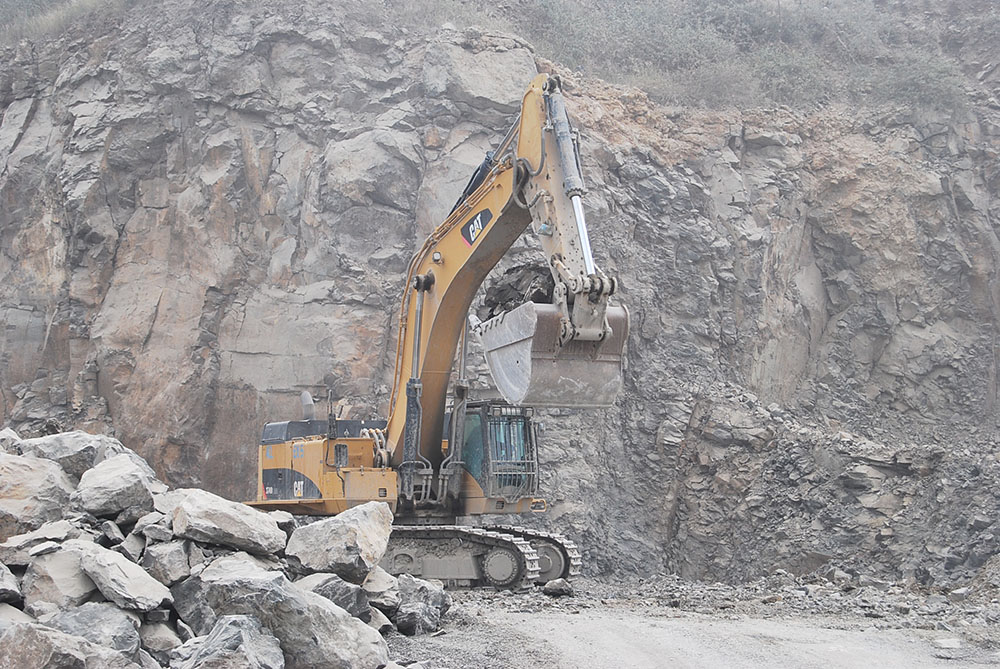
In 2021 the RMB published reviewed requirements for the issuance of a recommendation letter for granting authorisation to import, manufacture, transport, trade-in, and use dynamites in mining, quarry operations and other associated services.
“It has been observed that the demand trend of use of explosives is increasing,” said Francis Gatare, RMB’s chief executive officer.
“So, it is imperative that the processes that govern their administration are also reviewed and improved accordingly,” he said at the time.
For quarry operators, the reviewed regulations have listed several documents required for the approval of the importation of explosives for quarry activities.
Although the RMB has outlined specific requirements for the importation, usage, storing, trading, and manufacturing of explosives for storage and use under the reviewed regulations, all applicants for approval to acquire and use explosives must have a local registration certificate, provide a detailed description of the type of explosive to be used and also proof of expertise in handling explosives.
Rwanda’s mining and quarrying sector has been on a growth path in the recent past, with the National Institute of Statistics saying the sector’s performance increased by an all-time high of 34.5% in the month of June 2020.
Overall, the Institute says mining and quarrying in the first half of 2022 grew by 12.1%, “mainly supported by increasing mineral prices on international markets.”
Elsewhere in Kenya, the quarry sector remains largely unstructured, hence making the implementation of any regulations, such as the use of explosives in blasting rocks, difficult to monitor.
Kenya has an Explosives Act in place to govern the manufacture of explosives, storage, licensing of dealers, importation, exportation and use, as well as transport of the products and powers of licenced explosive inspectors, but the sector is largely unstructured.
A September 2020 report by Kenya’s Auditor General, Nancy Gathungu, says Kenya’s quarrying activities are largely uncontrolled and causing a “significant impact on the environment”.
“Blasting of rocks with explosives in order to extract materials for processing gives rise to noise and air pollution, damage biodiversity and habitat destruction,” she said in a report tabled in the Kenyan parliament.
Gathungu says there are huge gaps in Kenya’s legislation on the quarry business that has left the quarrying activities in the country unstructured.
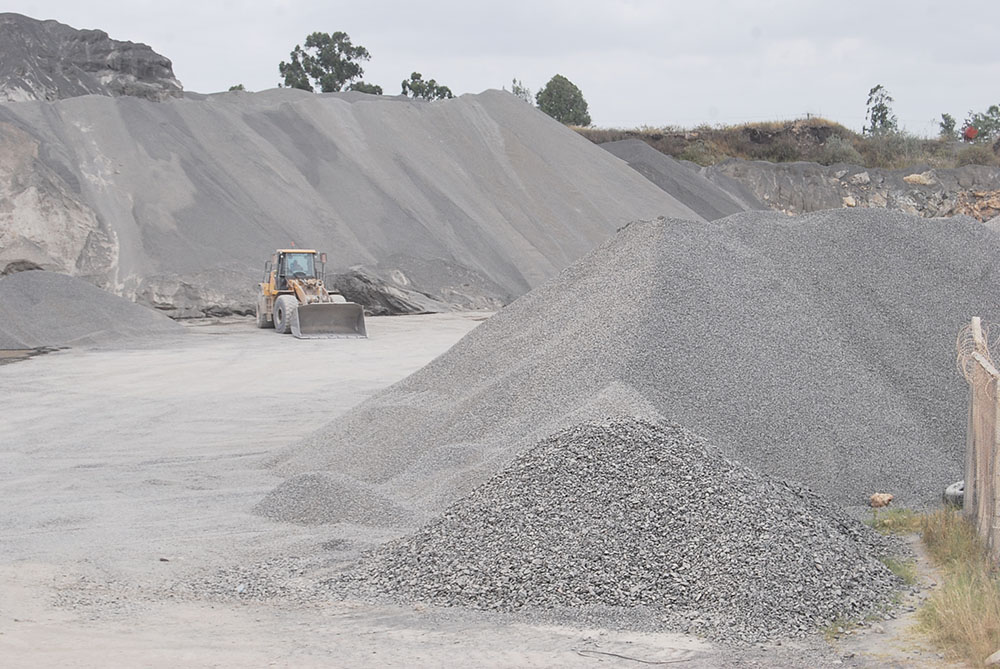
For example, construction minerals such as stones, gravel and sand are not listed in the First Schedule of the Mineral Act 2016, hence making regulating the products difficult.
“Both the department of mining and NEMA (National Environmental Management Authority) do not have a well-defined structure with regard to the management of quarrying activities,” observed Gathungu.
“This may have attributed to haphazard and unsafe quarry operations since it is difficult to ensure compliance and enforcement of licence conditions,” she said. The licence condition includes compliance with the country’s Explosives Act.
In fact, Kenya’s key oversight agencies “have different roles and responsibilities with regard to the quarrying sector management with the agencies generally operating independently without synergy.”
A survey by officials from the Auditor General’s office found “not all quarries in Kenya have obtained EIA licences due to low awareness of licensing, insufficient monitoring and evaluation, weak enforcement by NEMA, land ownership problems and the unregulated artisanal quarrying.”
Lack of EIA licences has resulted in the “proliferation of illegal quarries that pose danger to both human and animal lives, biodiversity loss, land degradation as well as the issuance of EIA licences to applicants who have not met all required conditions for a given (quarry) project.”
Kenya’s mining and quarrying industry has been growing in the last few years, with the Kenya National Bureau of Statistics indicating the value of the sector’s output increased by 5% in 2018/2019 year from KES 69bn (US$545mn) to KES 73bn (US$577mn). A similar growth trend was recorded in 2019/2020 when the value of the sector’s total output increased by 6.8% from KES 73bn (US$577mn) to KES 78bn (US$ 617mn).
As an indication of the likely trend for the mining and quarry sector in East Africa, Uganda has recently proposed to the East Africa Legislative Assembly (EALA) member countries increased cooperation among the East Africa Community (EAC) to ensure proper and beneficial exploitation and use of the proceeds from the extraction of natural resources that exist within regions such as mining, quarrying, oil, and gas extraction and dredging industries.
This proposal is likely to trigger debate and possible agreement among the East African countries on harmonising their respective regulatory frameworks on quarrying, including the management of, and trade in, associated quarry-blasting chemicals.

